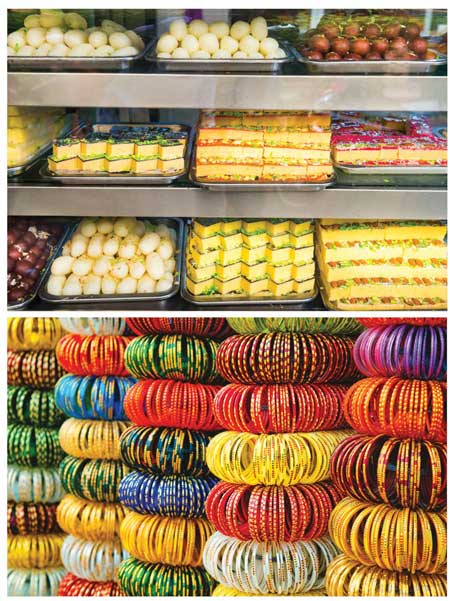ROYAL CITY
Wish you were here
The Home of the Holkars
Sandip Hor visits Madhya Pradesh’s Indore and savours the city’s history and culture
Located in Central India, Indore is considered the country’s cleanest city. Visitors are also drawn to its history, culture and culinary delights. Tucked away at an altitude of over 550 metres above sea level, the settlement grew where the Saraswati and Khan Rivers meet in front of the temple dedicated to the Hindu god Indreshwar.
Recorded history suggests the city was established in 1715 and gained prominence in the region as the capital of the princely state of the Maratha Confederacy under the Holkars. Their provincial rule continued until India gained independence from the British in 1947.
While relishing the glory of the Holkar dynasty, Indore presents a happy blend of a historical past and the promise of rapid modernisation. It’s one of the nation’s smart cities and also the commercial capital of the state of Madhya Pradesh.
Though the city lies in a Hindi speaking belt, the Marathi language – which was introduced during the Holkar dynasty – remains predominant even today.
WHERE TO STAY Options for accommodation range from star rated hotels to homestays, which offer local hospitality and home cooked delicacies. Radisson Blu and the Sayaji Hotel are luxurious, as well as conveniently located.
WHERE TO EAT The city serves Chinese, Italian, and North and South Indian delicacies. Visitors can also enjoy authentic local favourites such as poha and jalebi, khopra patties, khatta samosas, dal bafla, garadu, bhutte ka kees and batla kachori.
New Palasia and Revenue Colony represent two neighbourhoods that are home to famous eateries – such as the Vrindavan and Alav Restaurants. The city is also well known for its street food and the Chappan Dukan stretch is a favourite among locals.
WHERE TO SHOP Popular items that visitors can buy in Indore include handloom products, handicrafts, saris, fabrics, electronics and savouries.
Maheshwari saris are very popular and attract shoppers since they’re India’s finest handloom products. And Sarafa Bazaar is the premier marketplace; it transforms into a street food court at night.
WHERE TO GO As the former seat of the Holkar dynasty, this city of over one million residents draws outsiders to its magnificent palaces, beautiful temples and verdant parklands. Visitors can also enjoy exceptional day trips if they so wish.
From among the Holkar leftovers, the most visited are the Rajwada and Lalbagh Palaces, and the Central Museum, which is housed inside a former royal building. These locales reflect the glory and opulence of a bygone era.
The seven storey high Rajwada Palace – which is located in the heart of the city – was built in 1747, and displays a blend of European, Arabic and Maratha architectural styles. Worth noting are its imposing brickwork, historic gates, beautiful columns, ensconced balconies, rooms and fitted windows with ornamented carvings, and a gorgeous courtyard.
A light and sound show in the evenings for visitors showcases the city and its royal ethos. While Rajwada Palace is the main royal manse, the 45 room Lalbagh Palace is as stunning and has often been referred to as ‘India’s Buckingham Palace’ because of its main gate, which resembles the entrance to that world-famous royal abode in London.
Places of religious interest include numerous shrines of which the most visited are the Khajrana Ganesh Temple, Annapurna Devi Mandir and Kanch Mandir, which is a Jain temple built with glass inlays and mirrors.
Day trips to the ancient city of Ujjain (which is 55 kilometres away) and the fortress town of Mandu (100 kilometres from Indore) are popular among visitors. While Ujjain is a major Hindu pilgrimage site, Mandu is famous for its ruined forts and palaces that were built nearly 500 years ago by India’s erstwhile Muslim rulers.







